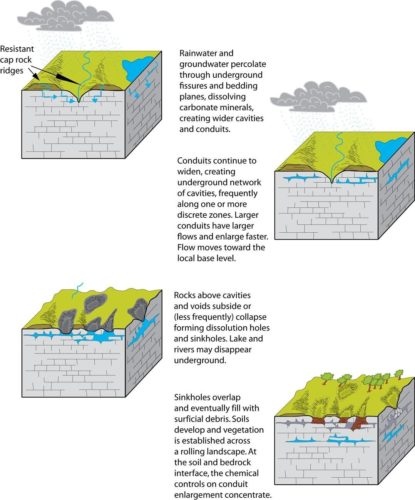Karst topography refers to a distinctive landscape that forms in areas where water dissolves soluble rocks such as limestone, dolomite, and gypsum. Over time, this chemical weathering results in the formation of unique features such as sinkholes, caves, and underground drainage systems. The dissolution of the rock creates irregular surfaces and porous formations, creating distinctive shapes and patterns on the surface of the earth. The topography of karst regions can vary widely depending on the type of rock, the climate, and the amount of water present, but they all share a common characteristic of being heavily influenced by the processes of dissolution and erosion.

